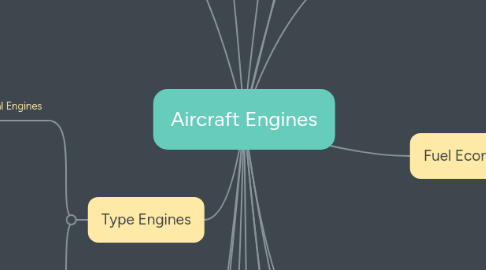
1. Durability and Reliability
1.1. Durability and reliability are usually considered identical factors since it is difficult to mention one without including the other
1.2. An aircraft engine is reliable when it can perform at the specified ratings in widely varying flight attitudes and in extreme weather conditions.
2. Operating Flexibility
2.1. Operating flexibility is the ability of an engine to run smoothly and give desired performance at all speeds from idling to full-power output
2.2. The aircraft engine must also function efficiently through all the variations in atmospheric conditions encountered in widespread operations.
3. Type Engines
3.1. Radial Engines
3.1.1. The radial engine consists of a row, or rows, of cylinders arranged radially about a central crankcase.
3.1.2. This type of engine has proven to be very rugged and dependable
3.1.3. The number of cylinders which make up a row may be three, five, seven, or nine
3.1.4. Some radial engines have two rows of seven or nine cylinders arranged radially about the crankcase, one in front of the other
3.2. Reciprocating Engines
3.2.1. The basic major components of a reciprocating engine are the crankcase, cylinders, pistons, connecting rods, valves, valve-operating mechanism, and crankshaft
3.2.2. In the head of each cylinder are the valves and spark plugs.
3.2.3. One of the valves is in a passage leading from the induction system; the other is in a passage leading to the exhaust system
4. Crankshafts
4.1. The crankshaft is carried in a position parallel to the longitudinal axis of the crankcase and is generally supported by a main bearing between each throw
4.2. The crankshaft main bearings must be supported rigidly in the crankcase.
4.3. This usually is accomplished by means of transverse webs in the crankcase, one for each main bearing.
5. Firing Order
5.1. The firing order of an engine is the sequence in which the power event occurs in the different cylinders.
6. Reciprocating Engine Power and Efficiencies
6.1. All aircraft engines are rated according to their ability to do work and produce power.
7. Mechanical Efficiency
7.1. Mechanical efficiency is the ratio that shows how much of the power developed by the expanding gases in the cylinder is actually delivered to the output shaft.
7.1.1. Mechanical efficiency = bhp/ ihp
8. Power and Weight
8.1. The useful output of all aircraft powerplants is thrust.
8.2. The force which propels the aircraft. Since the reciprocating.
8.3. Since the reciprocating engine is rated in brake horsepower (bhp).
8.4. The gas turbine engine is rated in thrust horsepower (thp)
8.4.1. Thp = thrust × aircraft speed (mph) 375 mile-pounds per hour
